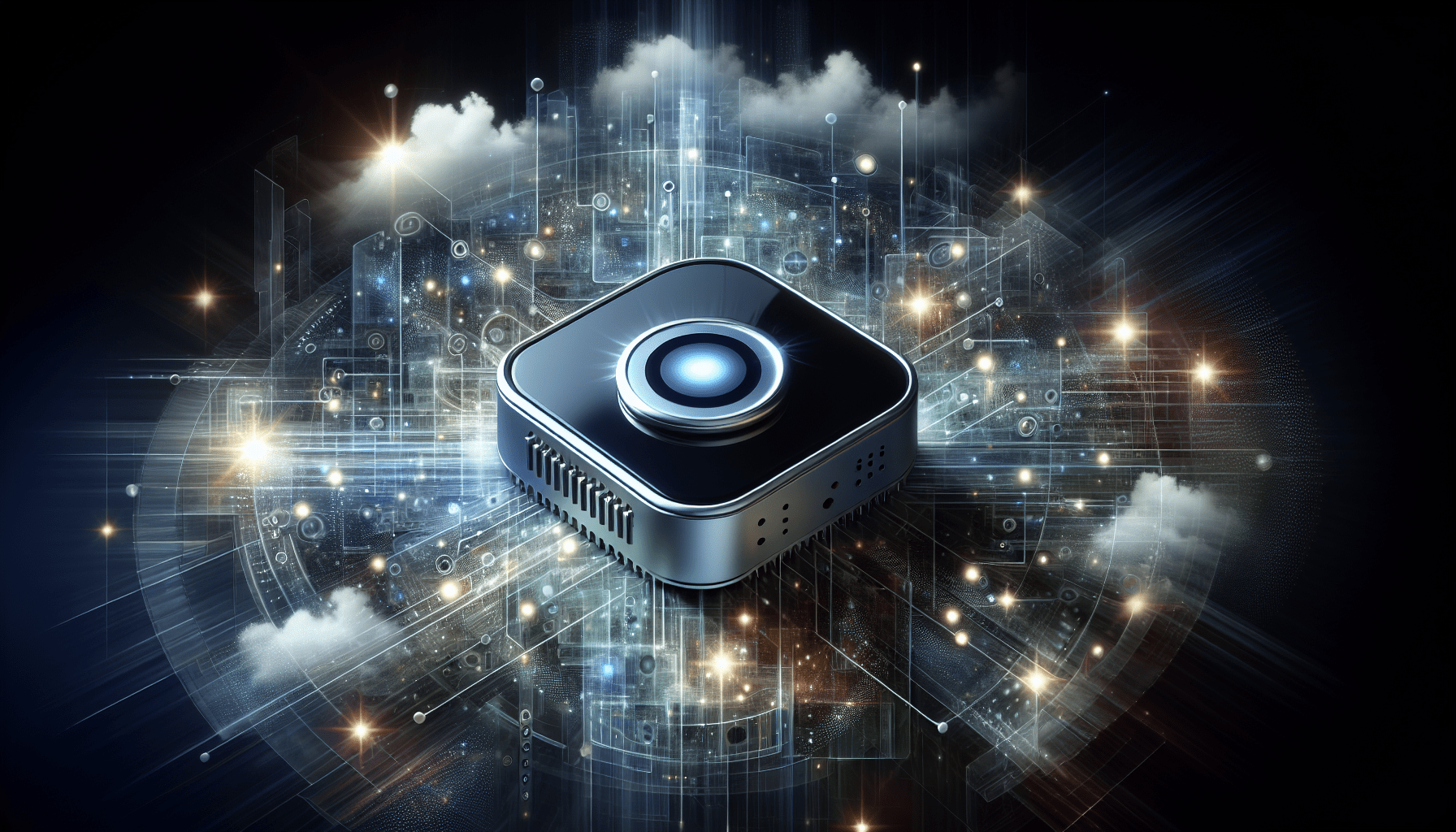What if you could harness the power of artificial intelligence (AI) right where data is generated, instead of sending everything to a central cloud? This is where Edge AI and IoT analytics come into play, transforming how data is processed and analyzed. In this article, we’ll dive deep into what Edge AI and IoT analytics are, why they’re important, and how integrating AI at the edge can optimize your operations.

Understanding Edge AI
Edge AI refers to the deployment of artificial intelligence algorithms directly on devices or local networks, rather than relying on a centralized data center. This local processing can lead to faster responses, less bandwidth usage, and improved privacy. Think about it: with real-time AI analytics right at the edge, decisions can be made almost instantly.
The Role of IoT
The Internet of Things (IoT) connects everyday devices to the internet, allowing them to send and receive data. When combined with Edge AI, IoT creates a powerful synergy. By embedding intelligence into devices, you can analyze data on-site, gaining insights that drive better decision-making. This is particularly useful in sectors like manufacturing, healthcare, and transportation.
Benefits of Edge AI and IoT Integration
You might wonder what the tangible benefits are of integrating AI at the edge. Let’s break down some key advantages:
1. Reduced Latency
When data is processed on-site, you experience significant reductions in the time it takes to analyze and act on that data. In scenarios such as autonomous driving, this can be a matter of life and death. By minimizing delays, Edge AI enhances functionality and user experience.
2. Bandwidth Efficiency
Sending all data to the cloud can be overwhelming, especially with the explosion of IoT devices. Edge AI allows you to filter and process data locally, sending only the critical information to the cloud. This reduces the strain on bandwidth and optimizes your data management.
3. Enhanced Privacy and Security
Keeping sensitive data close, rather than sending it across the internet, enhances privacy. Edge AI can help you implement security measures at the device level, reducing the risk of data breaches and ensuring compliance with regulations like GDPR.
4. Improved Reliability
In remote areas or places with intermittent connectivity, Edge AI continues to function independently of the cloud. This means you can still analyze and act on data even when you don’t have a stable internet connection.

How Edge AI Works in IoT Analytics
Getting into the specifics, Edge AI involves several components that work harmoniously together. You may want to visualize these components as layers.
Data Acquisition
This is where the IoT devices collect data from their environment. Sensors, cameras, and other devices gather vast amounts of data, which is the raw material for your analytics.
Data Processing
Once the data is collected, Edge AI algorithms process it locally. This step can involve filtering, aggregating, and applying machine learning models to extract meaningful insights.
Decision Making
With processed data, the Edge AI system can make decisions in real time. For instance, a smart thermostat uses AI to adjust the temperature based on user behavior and preferences, optimizing comfort and energy efficiency.
Data Transmission
For any necessary cloud interactions, only relevant and high-value data is transmitted. This could involve aggregated insights or alerts, ensuring efficient use of bandwidth and resources.
Applications of Edge AI and IoT Analytics
Understanding how Edge AI and IoT work together is enlightening, but it’s crucial to look at practical applications that illustrate their benefits.
Smart Manufacturing
In a manufacturing setting, machines equipped with sensors and AI can monitor performance and identify issues before they lead to failures. Real-time analytics can lead to optimized maintenance schedules and reduced downtime.
| Area | Benefit |
|---|---|
| Predictive Maintenance | Reduces unexpected breakdowns |
| Quality Control | Ensures consistent product quality |
| Process Optimization | Improves production efficiency |
Healthcare
In healthcare, Edge AI can power wearable devices that monitor patients’ vital signs in real time. By analyzing data at the edge, healthcare providers can receive alerts about anomalies quickly, ensuring timely intervention.
| Application | Benefit |
|---|---|
| Remote Patient Monitoring | Immediate feedback to caregivers |
| Smart Medical Devices | Enhanced patient outcomes |
Transportation
In the transportation sector, Edge AI plays a pivotal role in logistics and fleet management. Vehicles equipped with AI can optimize routes in real time, monitor conditions, and even predict maintenance needs.
| Feature | Benefit |
|---|---|
| Real-time Traffic Updates | Saves time and fuel |
| Predictive Maintenance | Reduces repair costs |

Challenges in Implementing Edge AI
While the benefits are compelling, there are challenges you may face when implementing Edge AI into your IoT framework. Understanding these obstacles is important for successful integration.
Data Quality
The effectiveness of Edge AI largely depends on the quality of the data collected. Poor quality data can lead to inaccurate insights and faulty decision-making. Establishing a robust data governance strategy is essential.
Computational Limitations
Edge devices often have limited computational power compared to centralized systems. Therefore, you need to optimize your AI models to ensure they can run efficiently on these devices without compromising performance.
Security Risks
While Edge AI enhances privacy, it’s important to ensure that devices are secure from cyber threats. Implementing layered security protocols at both the device and network levels is crucial for protection.
Best Practices for Integrating Edge AI in IoT Analytics
Successful integration of Edge AI and IoT requires strategic planning. Here are some best practices to consider.
Start Small
Begin with pilot projects that allow you to test Edge AI applications on a smaller scale. This will help you understand potential obstacles and performance before committing to larger implementations.
Invest in Training
Ensure that your team receives the necessary training in AI and IoT technologies. Familiarity with the tools and best practices will empower them to tackle challenges and make informed decisions.
Focus on Scalability
Design your Edge AI architecture with scalability in mind. Choose technologies that can grow with your needs, allowing you to expand your capabilities without major overhauls.
Prioritize Security
Implement strict security protocols from the outset. Regularly update your devices and software to protect against vulnerabilities and ensure compliance with data protection regulations.

The Future of Edge AI and IoT Analytics
As technology continues to progress, the future of Edge AI and IoT analytics looks promising. With advancements in machine learning algorithms, hardware improvements, and better connectivity solutions, you can expect even more powerful applications.
Increased Adoption Across Industries
As businesses increasingly recognize the benefits of real-time data analysis, adoption rates of Edge AI and IoT solutions are expected to rise. This cross-industry adoption will drive innovation and lead to more efficient operational strategies.
Enhanced Interoperability
The future will likely showcase improved interoperability between different IoT devices, allowing for seamless data sharing and collaboration across platforms. This will create robust ecosystems where data flows freely and efficiently.
Greater Emphasis on Privacy
With privacy concerns growing in significance, the integration of Edge AI will be instrumental in addressing these challenges. By processing data locally, companies can responsibly manage sensitive information, fostering trust with their customers.
Conclusion
By integrating Edge AI into your IoT analytics strategy, you position yourself to realize unparalleled efficiencies and insights. With reduced latency, improved security, and the capability to process data in real-time, the advantages of Edge AI are clear. Whether in manufacturing, healthcare, or transportation, the potential applications are vast and compelling.
As you consider implementing Edge AI, keep in mind the challenges and best practices outlined in this article to ensure a smooth transition. When done right, the integration of AI at the edge could not only enhance your operations but also transform the way you engage with technology, enabling innovation and opportunity for the future.
Ultimately, capturing the full potential of Edge AI and IoT analytics means being proactive, forward-thinking, and open to embracing the technologies that shape our world. The journey might be complex, but the rewards are certainly worth the effort. Your organization’s efficiency, security, and decision-making could be significantly enhanced, paving the way for future successes. So, are you ready to become part of this technological revolution?
